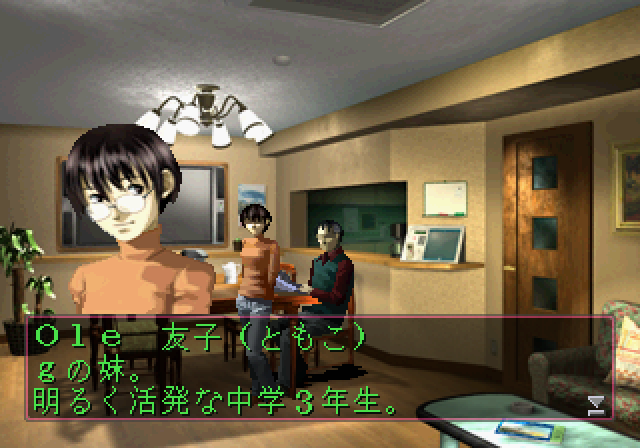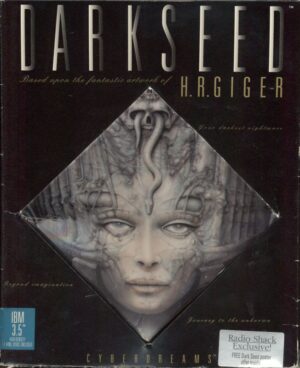Retro Replay Review
Gameplay
Devil Summoner: Soul Hackers delivers a robust turn-based JRPG experience that revolves around both traditional dungeon crawling and high-tech hacking mechanics. You step into the shoes of an eighteen-year-old member of the hacker collective “Spookies,” infiltrating virtual environments like Paradigm-X while simultaneously exploring the neon-lit streets of Amami City. The dual exploration—real world and cyberspace—adds depth and variety, forcing you to strategize on two fronts: physical navigation and digital infiltration.
(HEY YOU!! We hope you enjoy! We try not to run ads. So basically, this is a very expensive hobby running this site. Please consider joining us for updates, forums, and more. Network w/ us to make some cash or friends while retro gaming, and you can win some free retro games for posting. Okay, carry on 👍)
Combat encounters follow the familiar Shin Megami Tensei formula, pitting your party of six—comprising two human fighters and up to four demons—against waves of fiendish foes. What sets Soul Hackers apart is its dialogue-based demon negotiation system. Rather than simply slaying every enemy, you can converse with wild demons, learning their personalities and making the right dialogue choices to recruit them. This system encourages experimentation and builds an emotional connection to each demon you add to your roster.
The demon fusion mechanics have also been refined. Outside of special fusion chambers, you can now access your COMP device to combine demons on the go, creating new, powerful allies tailored to your battle strategies. Loyalty plays a crucial role: the more you use a demon in combat and cater to its preferences, the more obedient and potent it becomes. This loyalty meter evolves naturally as you fight, ensuring you feel reward for sticking with your favorite demons through thick and thin.
Additionally, the COMP isn’t just for fusion. By installing various software upgrades—everything from auto-mapping utilities to anywhere-save functions—you can customize your journey to suit your play style. Want a better view of the dungeon layout? There’s a program for that. Need to patch into Paradigm-X without retracing steps? There’s an app for that too. These options empower players to streamline exploration and focus on the strategic heart of the game.
Graphics
Visually, Soul Hackers strikes a distinctive balance between retro pixel art and futuristic cyberpunk aesthetics. The cityscapes of Amami City are bathed in neon hues, with towering skyscrapers and glowing network ports painting a vivid backdrop for your high-octane hacking adventures. Even on modern screens, the carefully crafted 2D backgrounds evoke a sense of immersion and scale, making you feel like a lone rebel navigating a sprawling metropolis.
Character sprites are expressive and detailed, capturing the personalities of both human protagonists and demonic allies. Nemissa, the mysterious demon who emerges from the hack, stands out with sleek design elements that highlight her otherworldly origins. Enemy sprites are equally varied, ranging from cybernetically enhanced thugs to grotesque digital phantoms, each rendered with enough flair to make every battle visually distinctive.
The user interface deserves special mention for its clarity and style. Menus, demon profiles, and COMP programs are all presented with neon-lined panels and minimalist icons that reinforce the game’s tech-driven theme. Map overlays and battle screens update smoothly, ensuring you always know where you stand in both the real world and Paradigm-X. The consistent design language keeps the experience cohesive, whether you’re negotiating with a demon or downloading a new piece of software.
Story
Soul Hackers weaves a narrative that feels true to its Shin Megami Tensei roots while carving out its own identity in the cyberpunk genre. Amami City, a near-future Japanese megalopolis, serves as the perfect stage for conspiracies and clandestine operations. Every household is networked, and the government’s tight information control sets a tense atmosphere where knowledge truly is power.
The storyline kicks into high gear when the Spookies breach Paradigm-X, Algon Soft’s most ambitious virtual city. What was meant to be a simple hack becomes a life-altering event as Nemissa, a demon with unknown motives, escapes into the real world. The game excels at building intrigue, drip-feeding revelations about Nemissa’s true purpose and the shadowy Phantom Society, a cabal of demon summoners with agendas that could reshape society.
Character interactions are a highlight. The dynamic between the young hacker protagonist and his companions feels genuine, with each member bringing unique viewpoints on ethics, loyalty, and the line between human and digital existence. Subplots involving corporate espionage, software piracy, and existential questions about artificial life add layers to the main plot, making every conversation worth paying attention to.
As you uncover Phantom Society’s schemes, the stakes escalate naturally from small-scale data theft to world-altering threats. Big reveals feel earned, and plot twists are peppered throughout, maintaining tension until the final confrontation. While some players might find certain expository segments dense, the payoff in narrative cohesion and thematic resonance is well worth the investment.
Overall Experience
Devil Summoner: Soul Hackers delivers a rich, multi-layered RPG that blends classic Shin Megami Tensei mechanics with a distinctly cyberpunk flavor. Its dual emphasis on real-world exploration and virtual network infiltration keeps gameplay fresh, while the refined demon negotiation and fusion systems reward thoughtful decision-making. Fans of strategic turn-based combat will find plenty to love here.
The game’s world design and narrative depth shine brightest when you piece together clues about Nemissa and the Phantom Society. Although some pacing issues arise during lengthy dialogue sequences, the blend of corporate intrigue, hacker ethos, and supernatural threats creates a compelling tapestry that holds your attention. Side quests and optional dungeons offer additional lore and powerful demons, extending replay value for completionists and series veterans.
Graphically, Soul Hackers stands the test of time. The art direction’s neon cyberpunk palette remains striking, and the UI feels remarkably modern. Even without flashy 3D visuals, the game’s atmosphere is immersive, thanks to meticulous sprite work and evocative environmental design. Technical performance is stable, with few hiccups during transitions between real and virtual realms.
Ultimately, Soul Hackers is a must-play for anyone interested in a thoughtful, story-driven RPG that challenges conventions while staying true to its Shin Megami Tensei lineage. Whether you’re drawn to its narrative intrigue, strategic combat, or the thrill of summoning demons to do your bidding, this title offers a memorable experience that holds up well years after its original release.
 Retro Replay Retro Replay gaming reviews, news, emulation, geek stuff and more!
Retro Replay Retro Replay gaming reviews, news, emulation, geek stuff and more!









Reviews
There are no reviews yet.